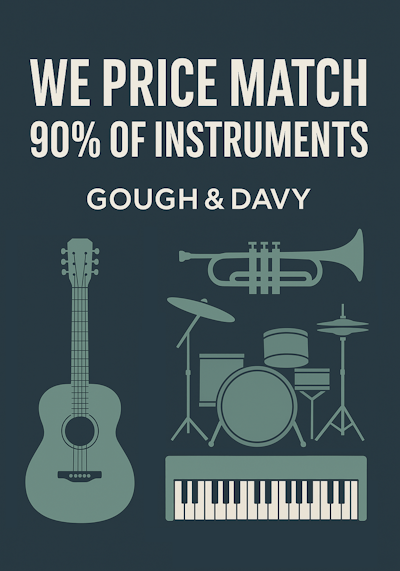
The Most Baffling Electric Guitars Ever Made
For the most part, the decades of innovation that go into the creation of modern electric guitars are often ones that are unseen or are most prominent in accessories for guitar than in the body itself.
With that said, there have been some incredible innovations in more recent times that not only transform how guitars sound and how they look, but how they are played as well, such as the Floyd Rose floating tremolo and increasingly sophisticated multi-effects processors and amplifiers.
However, for every incredible innovation and unique guitar development such as the Chapman Stick, there are an equal number of electric guitar innovations that are far more difficult to comprehend, and with that in mind here is a celebration of ambition, if not necessarily success.
The Godwin Guitar Organ
During the very early days of the synthesiser, back when the Moog and the Mellotron shaped the sound of rock and heavy metal, many different companies attempted to create so-called “guitorgans” that brought the two together.
Probably the strangest example of this was the Godwin Guitar Organ in 1976, created by Italian luthiers Sisme and featured a whopping 19 switches and 18 knobs that operated what was effectively an organ controlled using guitar strings.
It apparently resembled the sound of a Hammond B3 organ and is now astonishingly rare, in part because a surprising number of people who bought it modified it to just have the semi-acoustic guitar part.
Gibson Firebird X
A cavalcade of weird, ambitious ideas, none of which truly work, the Gibson Firebird X was meant to be the greatest “super robot” guitar ever made, during a time when the world’s most famous guitar company endeavoured to add as many features as possible to their top lines.
Starting with the headstock, it features Gibson’s infamous Robot tuner technology, where a guitarist would strum and after roughly five minutes of exceptionally loud clattering, the strings would tune themselves in something vaguely approximating a standard tuning.
This was as long as you were using no gauge higher than 11 and no gauge lower than nine and as long as the robot tuner felt like it, of course.
What was supposed to be revolutionary, make it like a “street-legal sports car” and justify a price tag that was twice the cost of a standard Gibson Les Paul, was the Gear Shift, an integrated effects system that was meant to allow guitarists to add reverb, modulation, distortion and other effects directly from the guitar.
The aim was to eradicate the pedalboard, but the poor quality of the effects and the confusing way in which they were set up ended up angering far more people, and the Firebird X was abandoned alongside the rest of the Robot Guitar line.
Misa Kitara
Technically not a guitar but a synthesiser in the shape of one, the Kitara was the first touch-screen “guitar”, where you would touch and strum the screen instead of physical strings and touch fret buttons, similar to the Rock Band Pro Guitar.
The idea was to give a player the best of both worlds, with the ability to play a real guitar but also play sounds like a programmable synth. The issue was that, as anyone who has played with a guitar app on a phone can attest, strumming a screen is not very consistent or enjoyable to play as more than a novelty.
Given that the Kitara was several hundred pounds, that was far too much to pay for a novelty and the interesting concept was abandoned after just two years.






